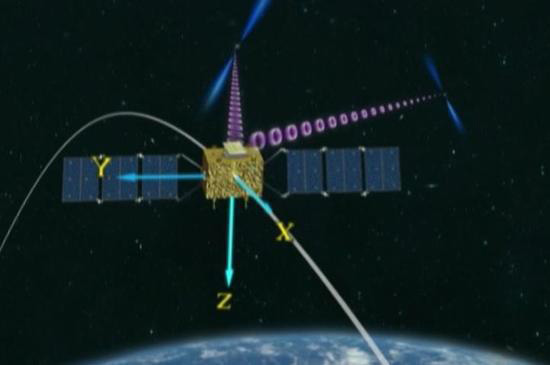China to launch world's first X-ray pulsar navigation satellite
Updated: 2016-10-10 16:24
(People's Daily Online)
|
||||||||
 |
The move brings autonomous spacecraft navigation and a more precise deep-space GPS one step closer to reality.
X-ray pulsar navigation is an innovative navigation technique wherein periodic X-ray signals emitted from pulsars are used to determine the location of a spacecraft in deep space.
Current ground-based navigation methods are limited by the time delay between spacecraft and the Earth. However, for certain type of pulsars, called "millisecond pulsars," pulses of radiation occur with the regularity and precision of an atomic clock. As a result, in some scenarios, the pulsar X-ray can take less time to estimate a location. This leads to more precise measurements of a spacecraft’s location.
However, since X-rays from pulsars are absorbed by the atmosphere, scientists must launch satellites to continue research of the new technology.
According to Shuai Ping, chief scientist behind the research of XPNAV-1 satellite, the key aim of this satellite is to detect the details of X-ray signals of 26 nearby pulsars, and to create a "pulsar navigation database." This target could be achieved within five to 10 years, Shuai estimates.
X-ray pulsar navigation techniques are an improvement over the current navigation methods of the ground-based Deep Space Network (DSN) and the European Space Tracking (ESTRACK) network. The time delay affecting DSN and ESTRACK can be up to several hours for a mission taking place near the outer planets, and even longer for a mission outside the solar system.
- Hollande, Merkel, Putin discuss how to implement Minsk peace deal
- Pentagon vows to respond to attempted missile attacks at US destroyer near Yemen
- NASA to invite private companies to install modules on space station
- Trump accused of inappropriate touching by two women
- White House denounces terror attacks in Afghanistan
- Republican voters frown on party establishment's criticism of Donald Trump

 Take a glimpse into soccer-related gifts of Xi
Take a glimpse into soccer-related gifts of Xi
 Precious relics of debauched king on display in Jiangxi
Precious relics of debauched king on display in Jiangxi
 In pics: Britain's Kate visits the Netherlands
In pics: Britain's Kate visits the Netherlands
 Qizai, rare brown giant panda in China
Qizai, rare brown giant panda in China
 Everything you always want to know about Macao
Everything you always want to know about Macao
 World's top 10 most valuable unicorn companies
World's top 10 most valuable unicorn companies
 Carver finds fame, money in wood sculptures
Carver finds fame, money in wood sculptures
 Missile destroyer to become local military-themed park
Missile destroyer to become local military-themed park
Most Viewed
Editor's Picks

|

|

|

|

|

|
Today's Top News
Trump outlines anti-terror plan, proposing extreme vetting for immigrants
Phelps puts spotlight on cupping
US launches airstrikes against IS targets in Libya's Sirte
Ministry slams US-Korean THAAD deployment
Two police officers shot at protest in Dallas
Abe's blame game reveals his policies failing to get results
Ending wildlife trafficking must be policy priority in Asia
Effects of supply-side reform take time to be seen
US Weekly

|

|







